Crater of Diamonds State Park – Murfreesboro, Arkansas
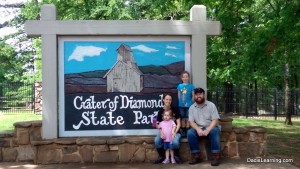 Our family recently took a quick “getaway” trip to Murfreesboro, Arkansas to visit the Crater of Diamonds State Park. This seemed like the perfect place for our family of four (6 year-old and 2 year-old girls) to meet our friends who also have two young children. Murfreesboro is about 4.5 hours away from the DFW area, or 6 hours they way we drive it
Our family recently took a quick “getaway” trip to Murfreesboro, Arkansas to visit the Crater of Diamonds State Park. This seemed like the perfect place for our family of four (6 year-old and 2 year-old girls) to meet our friends who also have two young children. Murfreesboro is about 4.5 hours away from the DFW area, or 6 hours they way we drive it
Crater of Diamonds has a very interesting history. The first diamond was found on the land in 1906 by a farmer who spotted an incredibly shiny rock in his field. Through the years various commercial mining operations have tried to maintain profitability but have all failed amid scandal and sabotage. The state of Arkansas bought the land from a private company in 1972 and established Crater of Diamonds State Park. This is the only place in the world that the public can go to hunt for diamonds.
The “hunting area” consists of 37.5 acres of tilled soil. The dirt is the crater from an ancient volcano, the explosion of which is estimated to be twice as large as Mount St. Helen. We arrived after significant rains so the fields were muddy, about ankle to shin deep in places. Hunting after heavy rains is the ideal time because diamonds are heavier than dirt. Heavy rains can wash away surface dirty revealing a diamond that is lying just below. Some of the largest diamonds in recent years have been found by people who were walking the rows and hunting on the surface. In April an Arkansas resident found a 6.19 carat diamond sitting on the surface after a heavy rain.
Rain is also helpful because it creates ‘bars’ of gravel in the channels between the rows. These deposits of gravel are the best bet for finding diamonds. The idea is to move as little dirt as possible while focusing on the gravel which is approximately the same weight as some diamonds.
There are wash stations where visitors can clean gravel to hunt for diamonds. We worked to gather buckets of material from the gravel deposits then carried them to the wash stations. A few scoops of the raw material would be put into a two-piece screening system that would be washed out in the giant troughs that the park supplies. The first screen had 1/4″ holes that caught large rocks and allowed fine gravel and dirt to pass through. The second screen, which attached below the first, caught the finer gravel then allowed the dirt to pass through. There was a certain technique that was ideal for screening the fine material.
If you’re thinking about going to Crater of Diamonds, take 10 minutes to listen to the presentation that a park ranger does on hunting for diamonds. The presentation covers FAQs and common mistakes. In just a few minutes guests can learn the basics of surface hunting, dry sifting, and washing. Some valuable tips I picked up included: where to look for material to wash, what to look for, the fingertip method of washing, the importance of letting the material drain out, and how to sort through the washed material. They even have rough diamonds for guests to see.
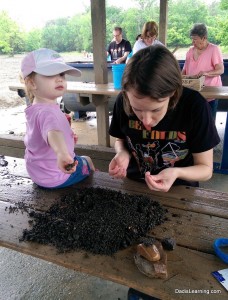 Our day of hunting didn’t produce a diamond, that we know of. Another tip from the park ranger was guests can take up to 5 gallons of washed gravel out of the park each day. Approximately 2/3 of the diamonds are found in material that leaves the park and is dried and viewed under good lighting. We have 2 small buckets of gravel sitting in our garage that I need to hunt through. Don’t come steal my buckets of diamonds
Our day of hunting didn’t produce a diamond, that we know of. Another tip from the park ranger was guests can take up to 5 gallons of washed gravel out of the park each day. Approximately 2/3 of the diamonds are found in material that leaves the park and is dried and viewed under good lighting. We have 2 small buckets of gravel sitting in our garage that I need to hunt through. Don’t come steal my buckets of diamonds
The children were surprisingly uninterested in getting messy. They are always wanting to dig and get messy at home, so we thought this would be a dream come true. Our plan was to turn them loose and let them get as messy as they wanted. The 2 year-olds both stepped foot in the mud and began to sink in and were scared. The 5 year-old and 6 year-old ran around for a while but neither one of them liked being really messy. Go figure! There were other kids who had the same reaction and then there were some kids who were covered from head to toe in the thick mud.
I had a ton of fun gathering and washing material. There were lots of interesting people in the wash stations who were from all across the United States and even a few international locations. Gathering gravel and washing it on a pretty day is fairly easy work.
Crater of Diamonds is an excellent state park with a very informative museum, affordable equipment rental for mining, free classification of found material, lots of picnic areas and even a water park. I was very impressed with the facility and the helpfulness of the staff. Last year ~117,000 visitors from all 50 states and 34 countries visited the park.
We stayed in Murfreesboro at the Budget Diamond Hunters House #2. It was a nice place that is just a few minutes from Crater of Diamonds. House #1 and #2 are owned by a couple that transplanted from New Orleans after Katrina. They were very helpful and the house was a clean, comfortable place for our two families to stay. They also own a sno-cone stand!!!
Murfreesboro is a nice little town that is diamond focused. I am sure the park is the main driver of the economy. The wives went and prowled a bit in the stores on the town square. There are several nature trails in the area. The Ouchita National Forest isn’t too far away which offers a lot of additional opportunities. All in all, it was a really fun trip and a nice chance to slow down a bit and enjoy our family.
- Our family at Crater of Diamonds State Park.
- The kids before we got messy.
- Our first look at the hunting area.
- The Park Ranger giving her demonstration.
- Trying to get through the mud.
- A view of all the hunters at the park.
- Hunting for diamonds with Mama.
- Enjoying sno cones on the front porch.
- Games in the backyard of the house we rented.
- Roasting marshmallows…2 at a time.
- Yum! Roasted marshmallows.
- Yum!
- The kids roasting some marshmallows.


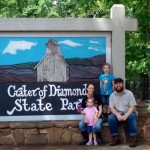

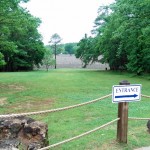
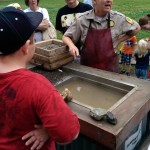
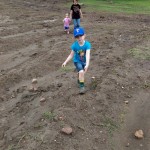
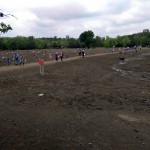
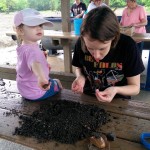
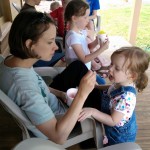
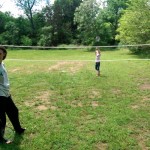
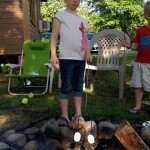
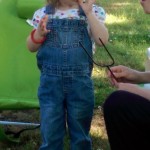
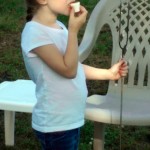
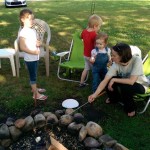
Very cool Jon. I have been wanting to take the family there for a while. My brother and his family went a few years back, and I think they even found a pretty nice diamond.
When we went to Lake Ouachita state park in Arkansas years ago, they had a similar thing where you could look for crystals (which are much easier to find). The kids had a good time, and we came home with a bunch of crystals.